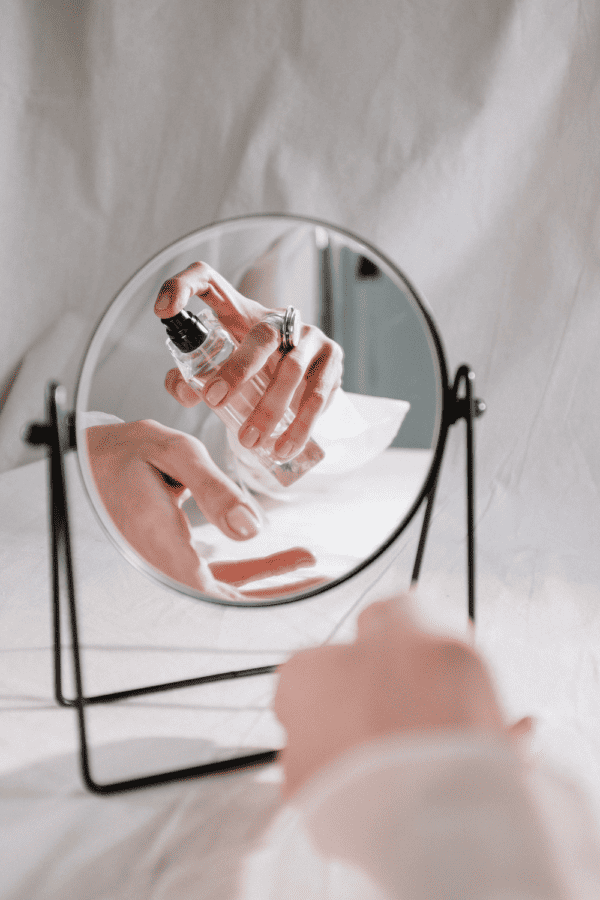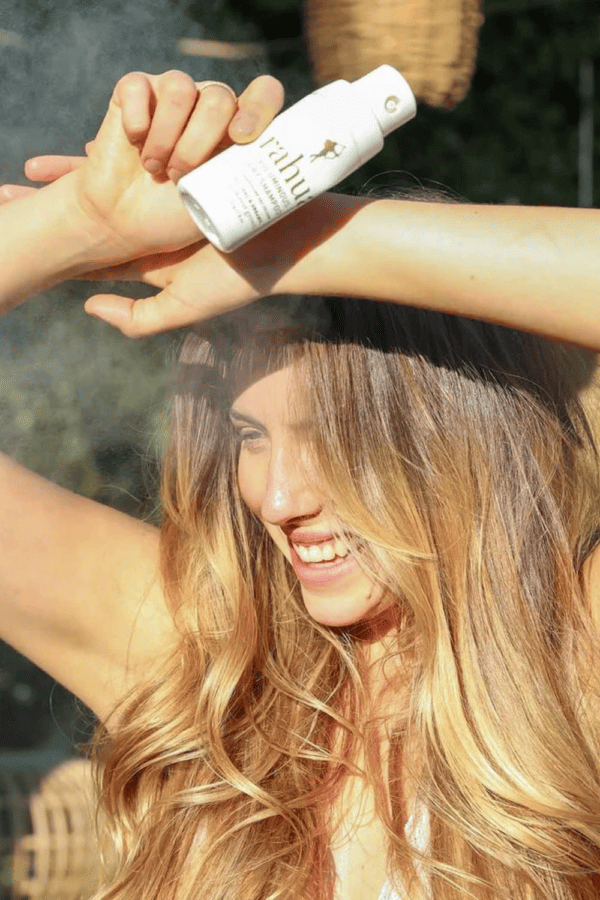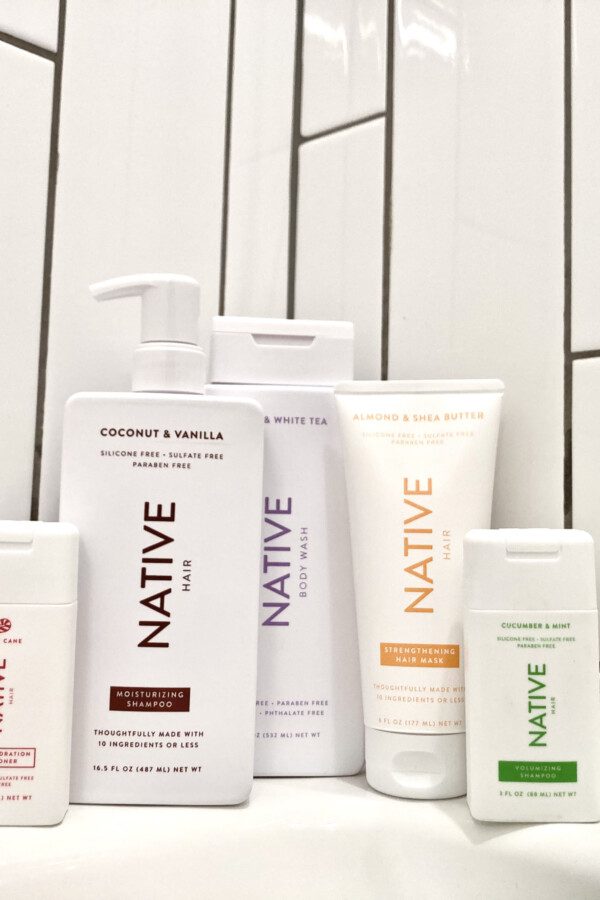Written by Abbie Davidson with Emmanuella Ogbonna
There is a lot of talk about “cleaner” options for pretty much everything—from furniture to clothing to what we eat. But what about what we put “down there”?
Studies have shown that on average, women spend a whopping 1800 days (yep, that’s around 100,000 hours) wearing sanitary pads in their lifetime. That’s a long time to be exposed to the chemicals found in most regular pads.
No wonder we’re seeing a wave of people making the switch to cleaner, all-natural pads, tampons, and other feminine hygiene products like menstrual cups and period underwear.
Organic pads and tampons, in particular, are gaining popularity because they have fewer additives and dyes… But unfortunately, recent testing has found toxic PFAS “forever chemicals” even in some organic cotton tampons and pads.
When it comes to our vaginal area, which is highly absorptive, we want to keep it free from toxins and chemicals. This guide will not only give you a list of the best brands, but will also help you understand what to watch out for while you shop.
P.S. If buying organic tampons each month is a stretch for your budget, then you may want to explore reusable period products, such as menstrual cups! This can save you quite a bit of money over time.
In a Nutshell:
- There are a lot of not-great ingredients used in tampons, pads, and panty liners—from various kinds of synthetics, to dyes and colorants, paraffin wax and mineral oil, and more. There are also unintentionally added contaminants such as PFAS.
- Even some brands that are advertised as “organic,” “natural,” or “non-toxic” are made with some of these ingredients.
- New-ish regulations in New York require period products to come with an ingredient list. While this is incredibly helpful for consumers, there is still room for more transparency.
- Our picks for the best organic tampons, pads, and panty liners are Natracare and Lola. Keep reading to learn why!
- Remember that when it comes to reducing your exposure to environmental toxicants, what you do more often is much more impactful than what you do every once in a while. Don’t stress out if you have to use conventional pads or tampons every once in a while. The purpose of this guide is to help you find the best go-to options for regular, long-term use.
Table of Contents
- What’s the Difference Between Organic and Regular Tampons & Pads?
- Are Organic Cotton Tampons & Pads Actually Better For You?
- Some Good News About the Safety of Menstrual Products
- Toxic Chemicals to Look Out for in Disposable Period Products
- Plastics and Endocrine Disruptors like Phthalates & BPA
- Semi-Synthetics
- Pesticide Residue
- Fragrances
- Dyes
- Paraffin, Mineral Oil, Ethoxylated Ingredients, and Other Additives
- Titanium Dioxide
- Dioxins & Furans from Chlorine Bleaching
- PFAS
- These Are The Best Organic & Non-Toxic Period Pads & Tampons
- Why Didn’t These Brands Make the List?
- Related FAQs
This article contains affiliate links, which means we may earn commission if you decide to make a purchase.
What’s the Difference Between Organic and Regular Tampons & Pads?
Conventional tampons and pads are usually made from a variety of synthetic ingredients, about which we go into depth below.
Organic tampons are made primarily out of organic cotton. Ideally, the cotton will be certified by a third-party label such as Soil Association Organic or GOTS certified organic cotton.
However, it’s important to be aware that there are lot of other ingredients that are used to make menstrual products as well. So even though a product may use organic cotton for at least a portion of their product, that doesn’t necessarily mean the whole thing is truly organic, natural, or non-toxic. Unfortunately, there is still a lot of greenwashing that goes on in the period product category, and we hope this guide will provide you with a better understanding of the lay of the land.
Are Organic Cotton Tampons & Pads Actually Better For You?
This is a bit of a tricky question because there isn’t much research that has looked at a direct correlation specifically between menstrual products and longterm health concerns.
(There is, however, research that shows that organic tampons and pads can be less irritating to the vaginal area and therefore better for people with sensitive skin, allergies, and other sensitivities.)
So when it comes to the potential longterm health concerns of conventional period products, we look at what chemicals are commonly found in pads and tampons, and then at whether or not those chemicals may be harmful, especially when absorbed over long periods of time.
This article will give you the rundown on what those chemicals are, but the short answer is: yes, organic tampons and pads that are free from harmful chemicals such as dioxins, certain pigments, fragrances, and PFAS are more likely to be better for you in the long run.
Some Good News About the Safety of Menstrual Products
In 2019, the state of New York passed a law that required menstrual product makers to disclose “all intentionally added ingredients” to their pads and tampons.
Before this, manufacturers didn’t even have to tell customers what was in the products they were putting in their vaginas! Eek.
These state-based laws often act as “de facto” nationwide laws, which means nearly everyone in the U.S. is benefiting from this regulation. If you go to any brand’s website, they should have the ingredients for their pads, liners, and tampons listed. (Note that this law does not apply to incontinence pads, though.)
This makes it much easier for consumers to find out what’s actually in their menstrual products and then make better choices.
This is great news, but unfortunately, it doesn’t mean the ingredient-transparency issue is completely solved. First, some companies are still relatively vague about their ingredients, as was shown by a 2022 investigation by Women’s Voices for the Earth.
For example, they may list “adhesives” on their label, without stating what adhesives are used. Same with things like “cellulose” (cellulose can be made from a variety of different plants) and “wax” (again, what kind?).
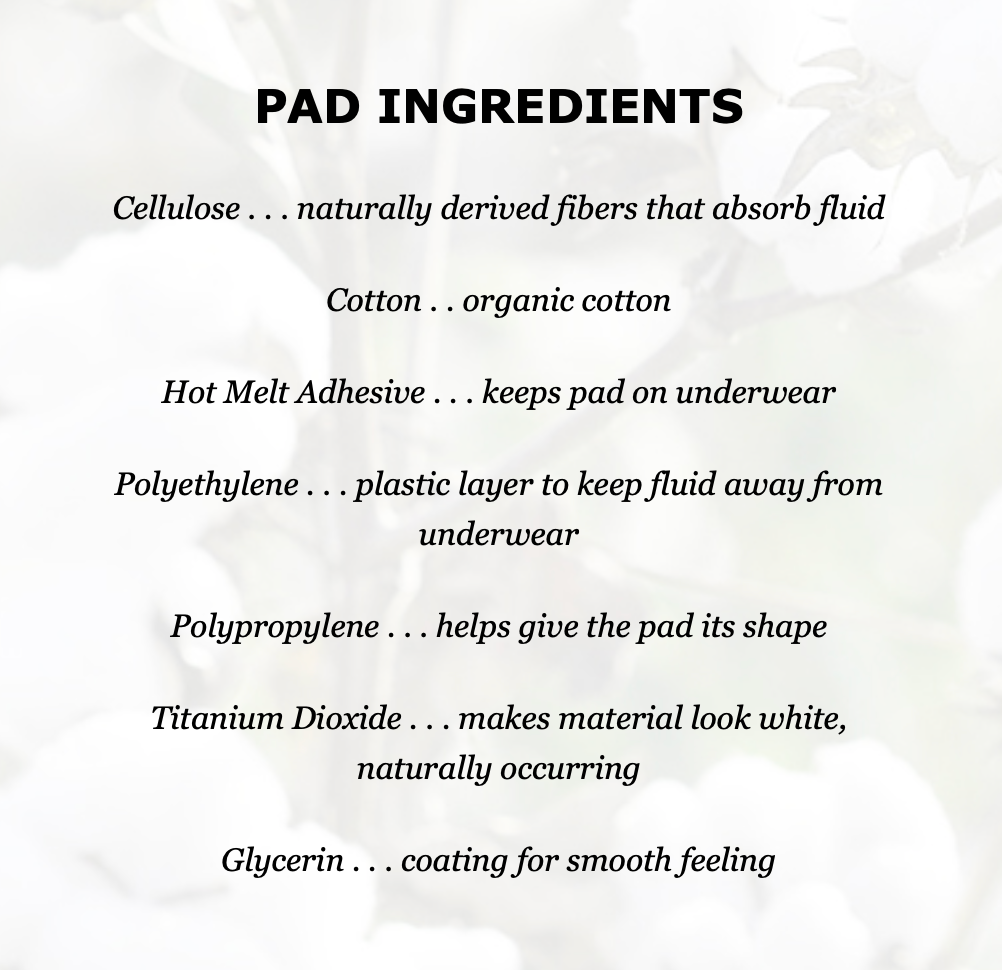
Take a look at the ingredients in L. pads, pictured above. You can see the that it lists “Cellulose” as an ingredient, but it doesn’t say what that cellulose is actually made out of. It could be made from so many different things—wood pulp, cotton, eucalyptus leaves, bamboo, algae, and more. It also lists “Hot Melt Adhesive,” but that’s very generic. What is the adhesive actually made out of? This is something we want to know since glues can often contain formaldehyde and other VOCs.
The second reason the the ingredient transparency regulation doesn’t completely solve the problem is because of unintentionally-added ingredients, such as PFAS. We’ll get to that in a minute.
Toxic Chemicals to Look Out for in Disposable Period Products
Plastics and Endocrine Disruptors like Phthalates & BPA
Most tampons and pads are made of plastic. Many of them use a few different kinds of plastic, like polyester and polyethylene. Sometimes they’re also blended with cotton.
It is well-established by now that many plastics (including period products) contain specific chemicals such as phthalates and bisphenols (like BPA) that have the potential to cause harm by leaching out of the plastic and absorbing into the skin. These specific chemicals are endocrine disruptors, which means they can alter the natural hormone systems of the body and potentially lead to downstream affects like infertility, cancer, and more.
Additionally, there is some early research that even plastics without these specific chemicals may have negative effects. In other words, it may not be X or Y chemical that’s cause for concern, but rather the plastic itself.
Then there’s the microplastic problem. Disposable tampon applicators, polyester-lined panty liners, and other plastic menstrual products end up in landfills, where they contribute to our larger plastic pollution problem that is also affecting not only ecosystems but human health as well.
This is one reason why switching to organic cotton tampons and reducing single-use plastic when you can is a good idea.
Semi-Synthetics
Many pads and tampons also utilize semi-synthetic materials, such as rayon (also called viscose or cellulose).
The reason they’re called semi-synthetics is because plant-based materials are used as the raw material, but then they’re so heavily processed that the final product can no longer be considered “natural.”
On one hand, you could argue that rayon is a better option than pure plastic. However, the main concern here are the chemicals that are used to process rayon, including things like carbon disulfide and sulfuric acid. (We covered this issue in-depth right here.)
2018 testing by Women’s Voices for the Earth found some of these chemicals (primarily carbon disulfide) in several mainstream tampon brands. Carbon disulfide is associated with a number of health affects, including coronary heart disease, psychiatric symptoms like hallucinations and paranoia, retinal angiopathy, psychophysiological effects, central nervous system (CNS) effects, infertility, and menstrual disorders.
Of course, using a rayon tampon once is not going to cause these serious health affects, but choosing a healthier period product to use regularly is one thing you can do to reduce your exposure over long periods of time.
Pesticide Residue
So if you don’t use plastic or rayon, then your next option is cotton. According to Women’s Voices for the Earth, past testing has revealed pesticide residue in tampons and pads made out of conventional cotton, which is why choosing 100% certified organic cotton tampons and pads when you can is the way to go.
Although there is definitely a range of toxicity when it comes to different kinds of synthetic pesticides, almost all of the most commonly used ones are associated with serious health affects of some kind.
Watch out for greenwashing when it comes to the main fabric materials of the topsheet and the core of pads and panty liners. As you can see on the L. pads below, it says “100% Pure Cotton” right on the front, big and bold. In reality, only the topsheet is made out of cotton; the core (which makes up the bulk of the pad) is made from an undisclosed kind of cellulose.
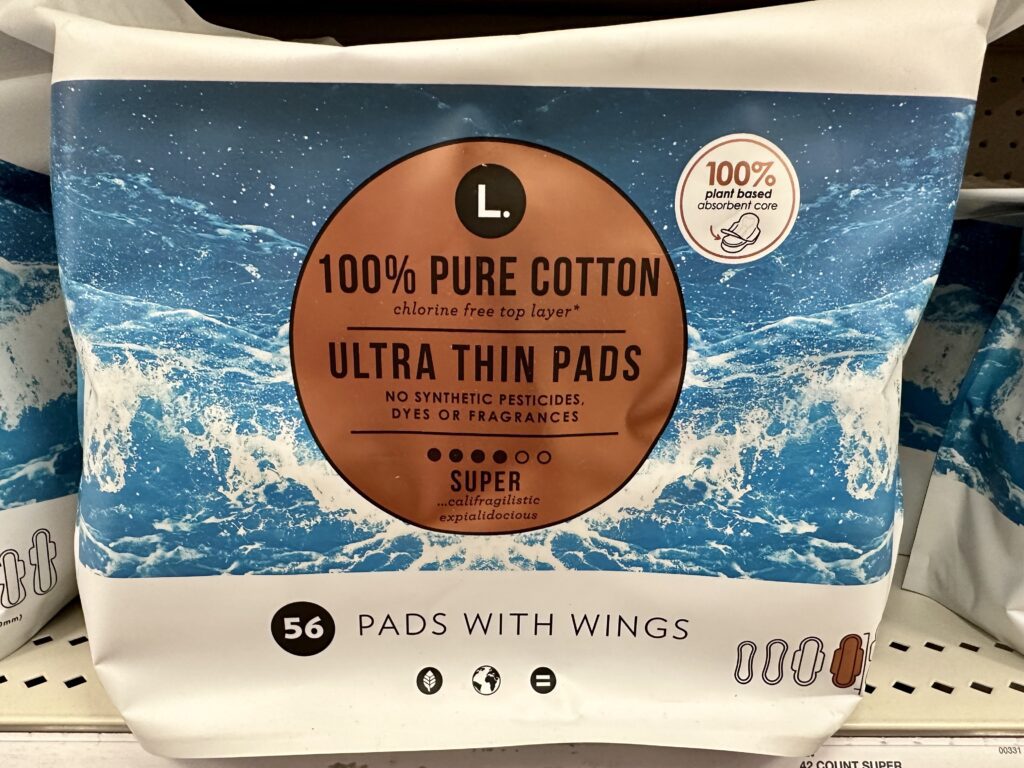
Fragrances
Sometimes, manufacturers also add fragrances to their menstrual products. But because of the “fragrance loophole,” these fragrances can potentially contain endocrine-disrupting phthalates as well as allergens. They can also contain things like solvents, dyes, and stabilizers, even though these things aren’t typically thought of as “fragrances.”
Whether you’re using organic cotton tampons or not, look for “Unscented” and “Fragrance-Free” products when you can. The good news is that it is becoming less common for conventional brands to add fragrance. However, you may want to look out for similar ingredients like “odor control.”
If you’re worried about smelling during your period, take some basic precautions such as changing out your pads/tampons regularly, taking showers daily and after exercise, and wearing breathable underwear such as cotton. You also may want to try using a menstrual cup instead of a pad or tampon, which collects blood instead of absorbing it, cutting down on odor potential.
Dyes
Dyes and colorants are used in disposable pads and tampons for aesthetic purposes; they don’t have any impact on how well the products actually work.
Dyes, colorants, and pigments can go by a lot of different names. Some of them are relatively benign, while others are associated with various health and environmental concerns. We even found carbon black (aka pigment black 7) in the Kotex pads (image below), which is one of the worst pigments and is associated with cancer and organ toxicity.
Because of the fact that these dyes don’t have any real, functional purpose, try to look for undyed pads, panty liners, and tampons when possible.
Paraffin, Mineral Oil, Ethoxylated Ingredients, and Other Additives
If you take a look at an ingredient label on a box of conventional tampons or pads, you’ll probably notice a bunch of “other” ingredients.
Take a look at this label for Kotex pads:

As you can see, they make a lot of claims at the top: “No Harsh Chemicals,” “Elemental Chlorine Free” (which does not mean it’s completely chlorine-free), “Pesticide-Free” (the only reason it’s pesticide-free is because there is no cotton used), “Made Without Fragrance” (actually a good thing), etc.
But when you look closer at the fine print, you’ll see a bunch of other ingredients. In addition to several different kinds of plastic (including styrene, which is one of the worst kinds) and many different pigments (including carbon black, mentioned above), there are things like mineral oil (which may be carcinogenic, depending on how refined it is), along with other synthetic ingredients that have very little safety data on them.
Many conventional tampons such as Tampax Pearl and Playtex Sports contain paraffin, which is a petroleum product that has its own issues.
Then there are ethoxylated ingredients, which are extremely common in menstrual products. They often have the letters “PEG” in them, although not always. Polysorbate 20 is another common one.
The problem with ethoxylated ingredients comes from the manufacturing process. They are processed using 1,4 dioxane and ethylene oxide, which can be toxic and traces of which can end up in the final product. Products that are made with ethoxylated ingredients have been found to be contaminated with these two chemicals.
Again, these would be contaminants and therefore would not be listed on the ingredient label.
Titanium Dioxide
Titanium dioxide is very common in pads and tampons these days. It’s a controversial ingredient, in large part because there just isn’t enough research about it yet.
The primary concern with titanium dioxide at this time is that it has shown carcinogenic properties when it’s inhaled. This is why you should try to avoid powders or aerosol sprays with titanium dioxide when you can.
But when it comes to other forms of titanium dioxide, the verdict is still out. The European Food Safety Authority has determined that titanium dioxide can no longer be considered safe, but we need more data. This is an area where you may choose to use the precautionary principle, which is where you avoid a chemical that could be problematic until we have more information about it.
Be aware that titanium dioxide may also be listed as “white pigment” or “pigment white 6.”
Dioxins & Furans from Chlorine Bleaching
The chlorine bleaching process that’s used to make menstrual products white can result in dioxins and furans, which are toxic.
The good news is that US manufacturers have mostly moved away from this method of bleaching for period products, so this is really only something to worry about if you’re getting your period products from overseas.
Note that dioxins and furans are contaminants and therefore will not be listed on ingredient lists, even if they are in fact present.
PFAS
The last issue that comes with pads and tampons is PFAS contamination. As a reminder, PFAS are the “forever chemicals” that are in the headlines a lot these days. They are commonly used for things like non-stick cookware, stain-resistant furniture, and water-resistant outerwear.
When it comes to menstrual products, it’s not entirely clear how or why the PFAS are getting into these products. They are not added intentionally and not listed on the ingredient labels. Most likely, they’re either being contaminated by machinery that has PFAS on it (for things like lubrication) or PFAS are being added further up in the supply chain without the brand’s knowledge (which could have been the case with Thinx period underwear).
One important thing to note here is that this is the only category where “organic” doesn’t necessarily mean better. Leah Segedie and her team at Mamavation have tested many different period products and they found that some organic brands had PFAS and others did not, and likewise, that some conventional brands had PFAS and others did not.
For our recommended list, we have left off the organic tampon and pad brands that contained PFAS in Segedie’s investigation. This includes Cora, Rael, The Honey Pot, and Veeda.
These Are The Best Organic & Non-Toxic Period Pads & Tampons
Now that you have reasons to use organic period products, it’s time to go shopping before Aunt Flo arrives. Here are some of the best organic and non-toxic period products on the market that you should consider adding to your cart:
Natracare
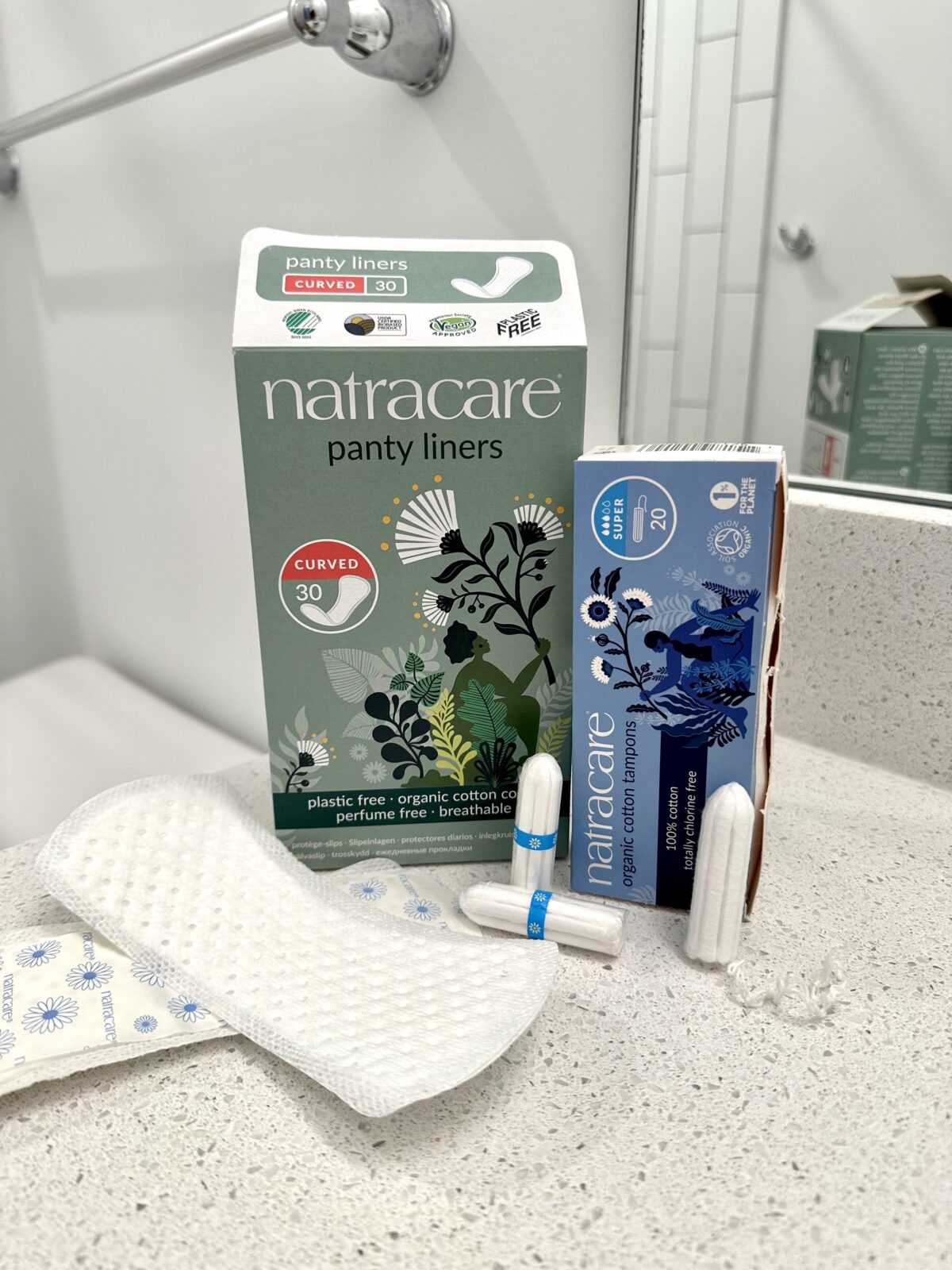
Carries: Tampons, pads, panty liners, incontinence pads, wipes, maternity
For people who want a plastic-free, non-toxic period product, the Natracare range of organic period products offers just that. In fact, Natracare is one of the best options in terms of non-toxic ingredients.
Most of Natracare pads and tampons are made with 100% organic cotton and are free from things like chlorine, fragrance, dyes, and plastic.
Their organic tampons are available with or without applicators. The applicators are made of compostable materials and not plastic, as seen with other regular tampons. They are also available in different absorbencies to choose from based on your flow.
For instances where they do use synthetics, they provide more information than most other brands do. For example, their Ultra Super Period Pads contain a “BPA free, medical grade polymer” for the glue. Although not 100% natural, Natracare states that this polymer is made from plant starches instead of petroleum and they give customers access to their third party testing to verify. You can also find out more about the cellulose and other materials they use on their website.
What we like about it:
- Comes with several third-party certifications, including MADE SAFE, GOTS, Soil Association Organic, and Vegan Approved.
- The lack of excessive packaging (like applicators) makes them lower waste.
- Options for different needs and preferences (for example, tampons with and without applicators).
- Available at many retailers such as Walmart and Whole Foods.
What you don’t like about it:
- Some of the tampons don’t come with applicators, so they may not be the best for beginners. The liners also don’t come in an outside wrapper (there’s just a sticky piece of paper on the back).
- You can’t purchase directly from their website.
- Can be more expensive compared to some other brands.
Buy at:
Lola
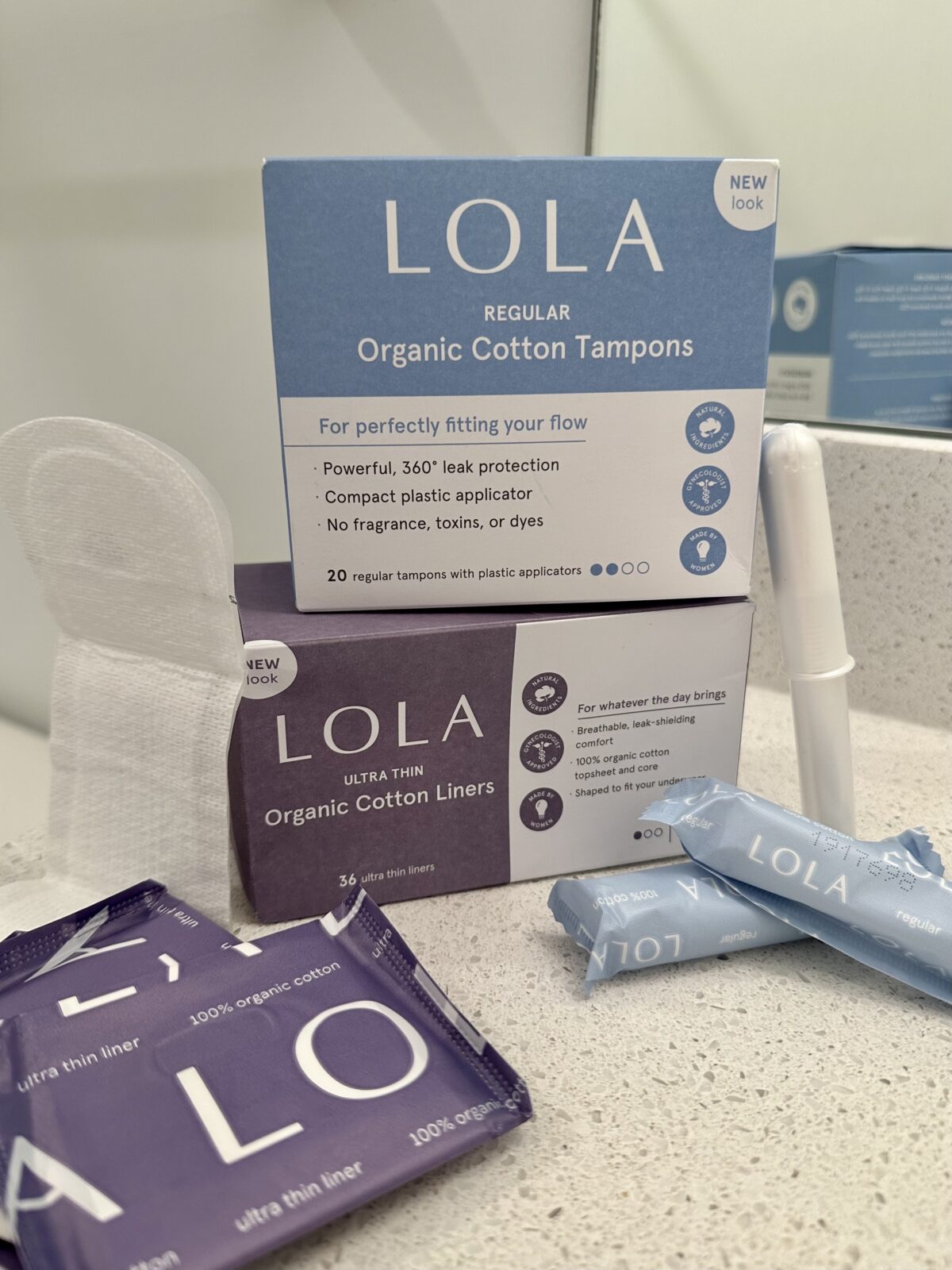
Carries: Tampons, pads, liners, underwear
Lola also carries tampons and pads for various needs and preferences. They have tampons with plastic applicators, cardboard applicators, and no applicators at all. Although the plastic applicators are not our first recommendation, some people may choose to get plastic—like teens who are just learning how to use tampons or people for whom cardboard applicators are painful. Since the tampon itself is made with 100% organic cotton, the applicator is not as much of a concern (since it’s not sitting in your body for long periods of time).
One of the best features of Lola tampons is the variety of absorbencies they offer. Inside a single box, you’ll find a mix of different absorbencies, including light, regular, super, and super+. So, it doesn’t matter if you’re having a lighter or heavier flow day; you can simply choose the tampon that suits your flow best.
Lola tampons are made out of 100% organic cotton and free from synthetic fibers, fragrance, chlorine bleach, chemical additives, and dyes.
Lola period products are gynecologist-approved. They are also FDA 501k cleared, adding a layer of credibility and assurance.
They also carry a range of other products, including menstrual cups, period underwear, lubricants, and more. (Note, however, that we have not taken a deep dive into the ingredients in all of their personal care products yet.)
What we like about it:
- Unlike Naturepedic, Lola’s tampons come with applicators, and the panty liners come folded in an outside wrapper. Even though this makes for more waste, it might be better for teens and beginners.
- Most of the products are made primarily of 100% organic cotton.
- Easy to buy a variety of products right from their website and sign up for a subscription to save money.
What we don’t like about it:
- Not totally plastic-free.
- They’re not always 100% transparent about the ingredients. For example, their Pads with Wings are made out of “100% organic cotton (topsheet and core), plant-based bioplastic (backsheet), non-toxic adhesives,” which is vague.
Buy at:
Why Didn’t These Brands Make the List?
You’ll probably notice that there are some other period brands that advertise themselves as “organic” or “non-toxic” but didn’t make our list of recommendations. Below we give the main reasons why.
- August: Pads contain a synthetic SAP core.
- Cora: PFAS found in Mamavation testing.
- The Honey Pot: PFAS found in Mamavation testing.
- L.: Made with various synthetic materials.
- o.b.: Their tampons contain various synthetics, pigments, and mineral oil.
- Organyc: We couldn’t find a full list of their ingredients.
- Rael: PFAS found in Mamavation testing.
- Seventh Generation: Their tampons contain paraffin and their pads contain a lot of petroluem-derived ingredients and other additives.
- Veeda: PFAS found in Mamavation testing.
Related FAQs
Do organic tampons reduce the risk of toxic shock syndrome (TSS)?
No. TSS is most often caused by bacteria and can result from wearing any tampon for too long, regardless of whether it’s organic or not. Higher absorbency tampons are associated with higher risk of TSS. Always change your tampon every 4 to 8 hours, regardless of what it’s made out of.
Can organic tampons help with cramps?
They can! Although there is no direct evidence that organic tampons reduce cramps, many users state that it does ease their symptoms. This is most likely because of the overall decrease in irritating and inflammatory ingredients.
What is the lawsuit against L organic tampons?
A class action lawsuit was filed against L. (which is owned by P&G) in 2022 for false advertising. The plaintiff states that L. advertised their tampons and pads as “100% Organic” when in reality they contain certain non-organic and synthetic ingredients. As of June 2023, the lawsuit as not been settled yet.
Who owns Cora tampons?
Cora is owned by Molly Hayward, who is also the original founder.
About the Authors

Emmanuella Ogbonna has a degree in Pharmacy. She is also a health writer, medical researcher and lover of nature. She combines her expertise with her love for nature to promote a healthier and more sustainable lifestyle.
She has over 3 years of experience writing content for the health and wellness industry. She uses her experience as a medical researcher to ensure health content is accurate.
When she’s not working, Emmanuella enjoys diving into a good book, going for walks while listening to her favorite music, watching thought-provoking films, and spending quality time with her loved ones.


